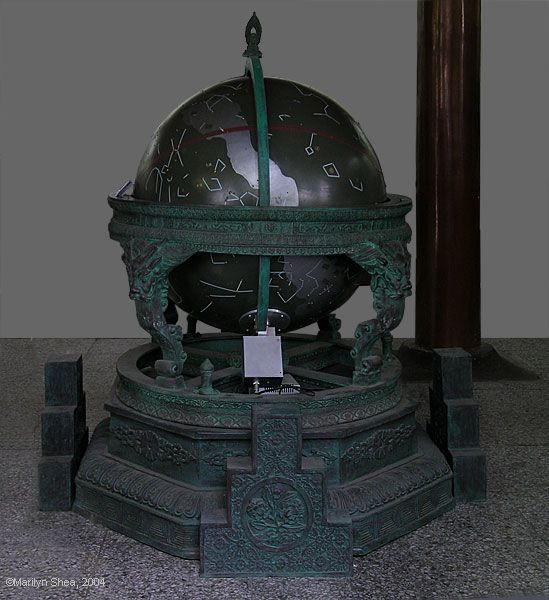| In ancient times the celestial globe was called the húnxiàng 浑象, roughly translated that means "entire shape." Today the standard name is tiāntǐ yí 天体仪. The original of the instrument shown above in the ancient Beijing Observatory was made in the 12th reign year of Emperor Kāngxī 康熙, or 1673. The original globe weighed 3850 kilograms or 8487.79 pounds. The main components of the celestial globe are the hollow bronze globe, the meridian circle (子午圈 zǐwǔquán) and the equatorial ring (地平圈, dìpíngquán). In addition, there are several bands that circle the globe with fine markings for measurement (see close-up below). Over 800 stars are positioned on the globe, some connected by lines to indicate groups in constellations. The names of the major constellations are included. The globe shown is a copy of the globe made in the Qing Dynasty. It has been reduced by the ratio 1:2.5. One advantage to having a copy is that it has been electrified so that the stars are lit from within and shine as it rotates in sync with the earth.
Celestial globes were used to chart the positions of the stars and as aids to calendar making. Some were built on a large scale so that a person could sit inside one and look at the stars -- the star positions were raised symbols on the outside of the globe but were also small holes that let light pass through from outside.
In the background, from left to right, you can see a rubbing of the Song Dynasty Stone Star Map, an instrument tower that combines a water powered armillary sphere, a celestial globe and a clepsydra built in the Song Dynasty, and to the right under the windows, a steelyard clepsydra.
|


